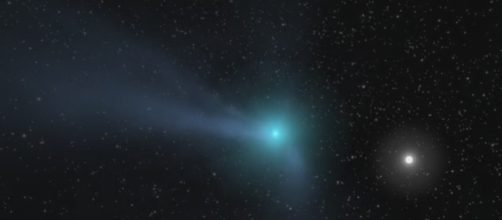There's a 1950s Indian film song with the refrain, 'I thought I was going to Japan, but I ended up in China.' That might be how researchers at the All Sky Automated Survey for Supernovae (ASAS-SN) project felt when they found a new comet instead of the supernova they were looking for. The bright moving object was first noticed by Jose Prieto, who is a professor of Astronomy at Universidad Diego Portales in Chile.
A bright, fast moving object
When checking the images collected on the night of July 19, Prieto noticed a light source that did not match any known objects at that location.
It was slightly extended and moving rapidly. This was confirmed by another team member, an amateur astronomer in Australia. That was a lucky coincidence since comets move fast. Being able to see it on the same night in Chile and Australia made it easier to pinpoint its location in the future. The comet has been named ASASSN1 and is approaching the inner Solar System. It should be visible for a few months more.
Comets are made of frozen dust and gases, causing scientists to refer to them as dirty snowballs or snowy dirt balls. As they approach the sun, the gases stream out to create a halo effect and also the characteristic tail. They have highly elliptical orbits that bring them to the inner solar system on an infrequent but regular schedule.
Scanning the night sky for bright transients
ASAS-SN is an international network of eight telescopes that scan the Night Sky every two or three days looking for supernovae. A supernova is seen as a very bright object and is an exploding star. A shock wave follows the explosion called a supernova remnant that sweeps up the gas and dust debris. Supernovae can outshine a galaxy in the night sky but fade away after a few weeks or months.
The ASAS-SN network is based at Ohio State University and scans the night sky to discover bright transient objects, like supernovae and even comets, within and outside our galaxy. The network covers the night sky in both hemispheres. These discoveries are significant because they shed light on the ending as well as the beginning of stars.
Supernovae add elements with a higher mass to the interstellar medium, which is the stuff that stars are made from. Shockwaves from the explosions can also lead to the formation of new stars.
Even though Comet ASASSN1 is not a supernova, it doesn't matter. The team loves and maps all bright, transient objects in the night sky.


